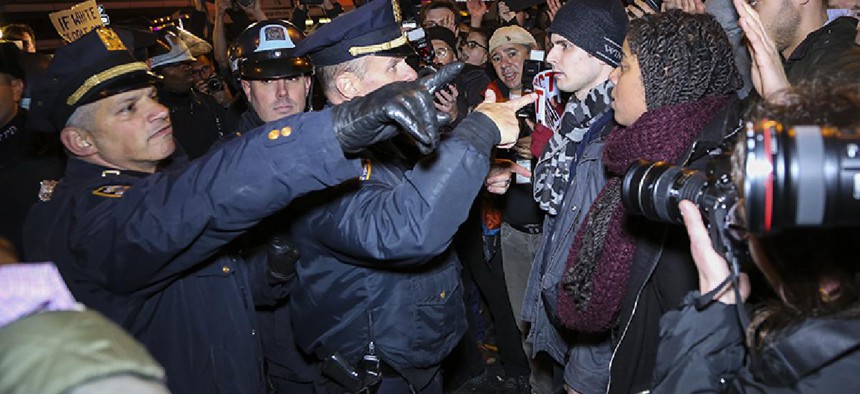The recent arrest of a 25-year-old federal contractor, Reality Leigh Winner, on charges of sending classified information to a media outlet, marks the first criminal leak case by the Trump administration – but it’s only the latest case of a government contractor leaking sensitive information to the public.
And it’s not just a federal phenomenon, either. Here in New York, government memos, police reports and more have found their way to the press. Here are a few examples:
RELATED: 10 tweets politicians instantly regretted
Eric Garner aftermath
On July 17, 2014, Eric Garner was tackled by NYPD Officer Daniel Pantaleo and held in illegal chokehold that killed him. Pantaleo was not indicted, a decision which prompted protests and demonstrations all over the country.
In March of 2017, ThinkProgress published leaked documents showing that the New York City Civilian Complaint Review Board, an independent police investigative agency, substantiated at least four claims that warranted disciplinary action against Pantaleo before the Eric Garner case.
The NYPD called the leak “illegal” and said it would try to find the leaker while not denying the allegations. Yet the disclosure raised questions about the light punishment for Pantaleo and his $120,000 salary, with a $20,000 increase since 2014, despite multiple unresolved charges. The leaker, an employee of the Civilian Complaint Review Board, was ultimately identified and forced to resign in March, although the person’s identity was kept secret.
Stewart Airport
ZDNet in February published a story based on internal documents showing that in 2010, Stewart International Airport in upstate New York was not conducting appropriate screenings with the “No Fly & Selectee Lists,” the U.S. Department of Homeland Security’s watch list of suspected terrorists. The website said the documents were available due to a “security lapse” that left the airport’s servers “exposed to the open intern for almost a year.”
Brooklyn-Queens Streetcar
Politico in April reported on a confidential memo that raised questions about New York City Mayor Bill de Blasio’s proposed streetcar connecting Brooklyn and Queens and whether it would actually pay for itself. The memo sent by the BQX Project Team to Deputy Mayor Alicia Glen regarding the cost of the 16-mile-long Brooklyn-Queens Connector said that the “value capture” funding mechanism may not be sufficient to cover the estimated $2.5 billion cost. De Blasio seemed to confirmed part of the message, stating that if a funding gap turns out to exist, “We'll cross that bridge when we get to it.”
RELATED: Why do you hate Donald Trump?
ICE arrests
In mid-February, a local activist group acquired a memo from the U.S. Immigration and Customs Enforcement stating that 40 “foreign nationals” had been arrested in New York City, nearly 95 percent of whom had prior criminal convictions. The arrests drew condemnation from local communities and officials like U.S. Sen. Charles Schumer. The activist group, the New York Immigration Coalition, argued at the time that ICE’s actions only put “New York’s immigrant communities … in a state of panic.”
Moreland Commission
In 2014, City & State reported on internal documents by the Moreland Commission on Public Corruption that tracked questionable campaign finance spending by state lawmakers, including then-state Sens. George Maziarz and Greg Ball. Both men declined to run for reelection. Maziarz is facing charges in an alleged payoff scheme involving campaign funds, and has pleaded not guilty.
NEXT STORY: Winners & Losers 6/9/17


